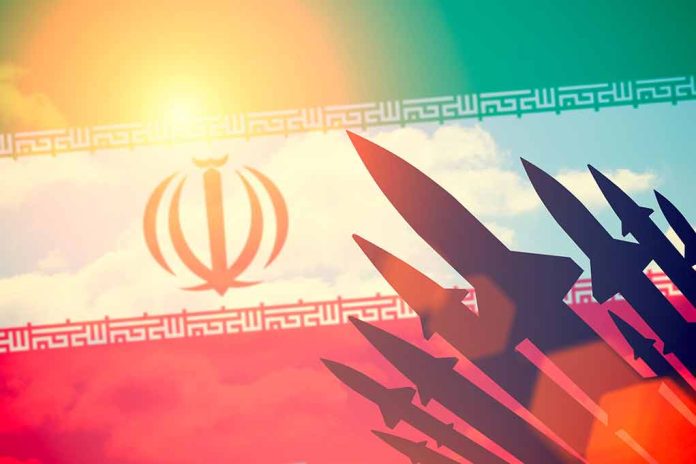
Iran’s introduction of the Qassem Basir ballistic missile poses fresh questions about the efficacy of U.S. and Israeli defense systems.
Key Takeaways
- Iran unveiled a new solid-fueled ballistic missile named “Qassem Basir” with a reported range of 1,200 kilometers (approximately 745 miles).
- The missile claims to bypass U.S. and Israeli defense systems, particularly the THAAD network, with improved guidance and maneuverability.
- Tensions with the U.S. and Israel persist over Iran’s nuclear program and regional policies.
- Aziz Nasirzadeh, Iran’s Defense Minister, stated that U.S. bases in the region would be legitimate targets if provoked.
- Observers question the missile’s unverified capabilities, citing Iran’s history of exaggerating military prowess.
Iran’s Ballistic Missile Unveiling: Qassem Basir
Iran has announced the development of the Qassem Basir ballistic missile, claiming groundbreaking advancements in technology that can evade existing advanced defense systems. The missile, with an estimated range of 1,200 kilometers, is aimed at enhancing Iranian military capabilities amid persistent tensions with the U.S. and Israel. This development emerges as discussions on Iran’s nuclear program and its affiliations in the region continue to complicate relations.
Aziz Nasirzadeh, the Iranian Defense Minister, highlights the missile’s solid-fuel composition and electro-optical guidance mechanisms. This configuration purportedly lessens susceptibility to electronic countermeasures and negates the need for reliance on satellite navigation, presumably increasing its operational integrity against sophisticated defense systems like THAAD. Iran’s claims are bolstered by the recent ability of Houthi forces in Yemen to avoid interception, showcasing the growing regional missile threat.
BubbaNews:
Seeing reports that the Israeli Air Force is indicating that the American 🇺🇸 THAAD missile system missed the Houthis ballistic missile 🚀 today, allowing it to hit near the airport.Not a matter of if but WHEN Israel’s enemies see a breach in Israel’s air defense… pic.twitter.com/XiiQ2EgMnG
— Forgiven Messenger (@ForgivenMessen1) May 4, 2025
Regional Tensions Escalate
The unveiling coincides with mounting pressures in the region, particularly regarding Iran’s aspirations for regional influence. Though Iran asserts the missile’s capabilities, there are questions about these claims. Past encounters highlight formidable challenges in countering Israeli and American interception technologies. Analysts stress the regional threat posed by Iranian-backed groups, despite Iran’s insistence on the Houthis acting independently.
“We have no hostility toward neighboring countries and seek brotherly relations, but in the event of an attack, U.S. bases in the region will be considered legitimate targets,” Nasirzadeh warned.
Further complicating matters, Israeli defense experts note Iran’s assertions following an operational shortfall of predecessor missiles. Israel remains vigilant, with Prime Minister Benjamin Netanyahu intimating strong retaliatory measures should threats materialize. The international community observes as diplomatic efforts face challenges in resolving tensions without escalation into open conflict.
Conclusion
Iran’s missile test underscores a critical juncture for defense strategies in the region. The Qassem Basir exemplifies Iran’s technological advancements and persistent ambitions, posing substantial implications for geopolitical dynamics. Military analysts caution that exaggerations may dilute perceived technology gaps. However, potential advancements warrant vigilant updates to defense protocols to secure U.S. and Israeli assets against emerging threats.
“Message to IRAN: We see your LETHAL support to The Houthis. We know exactly what you are doing,” Pete Hegseth wrote on X.
While internal challenges within Iran signal vulnerabilities, regional engagements remain delicately poised. The unveiling of this new missile reaffirms the ongoing complexities surrounding national security and strategic deterrence.





